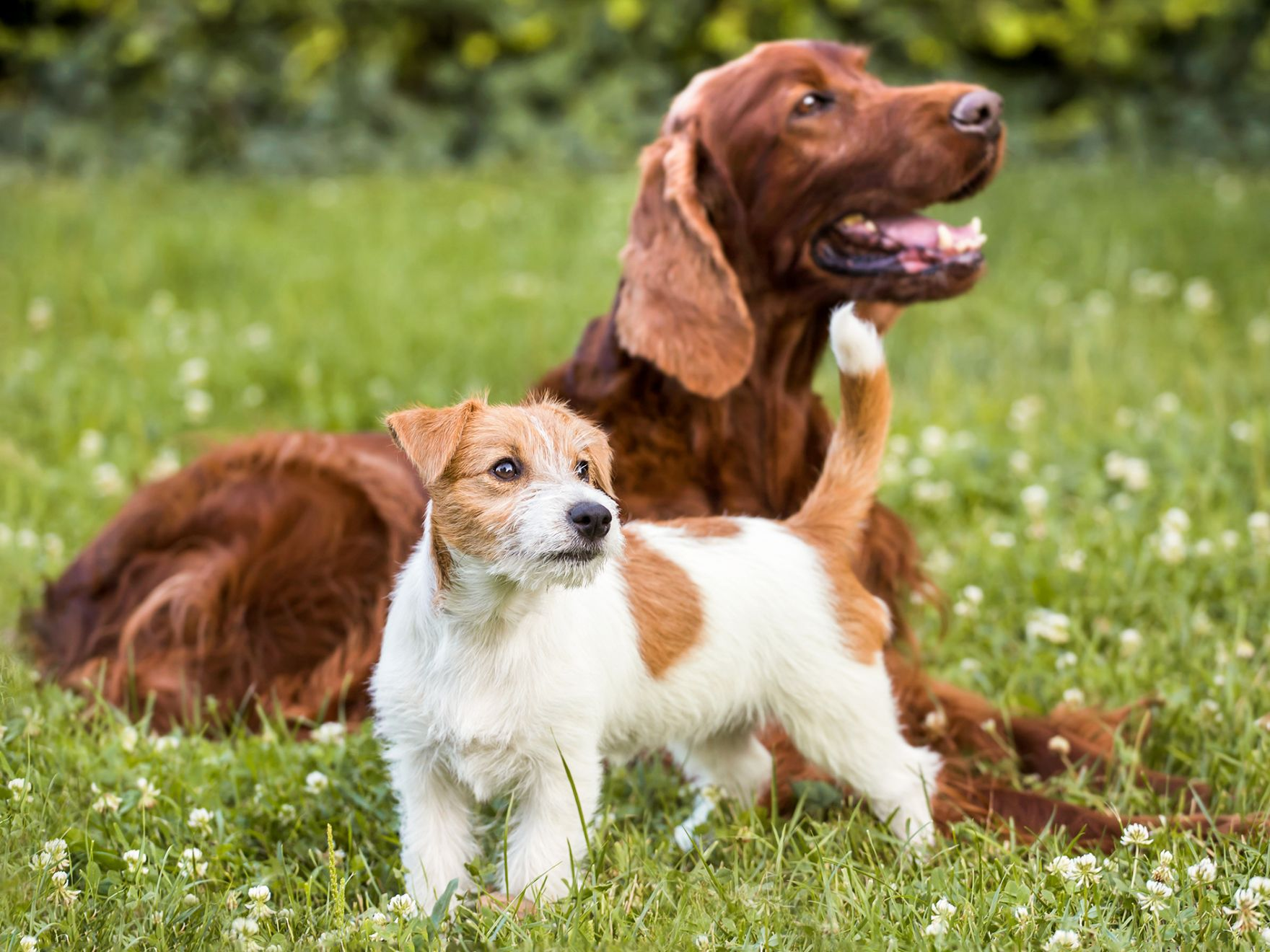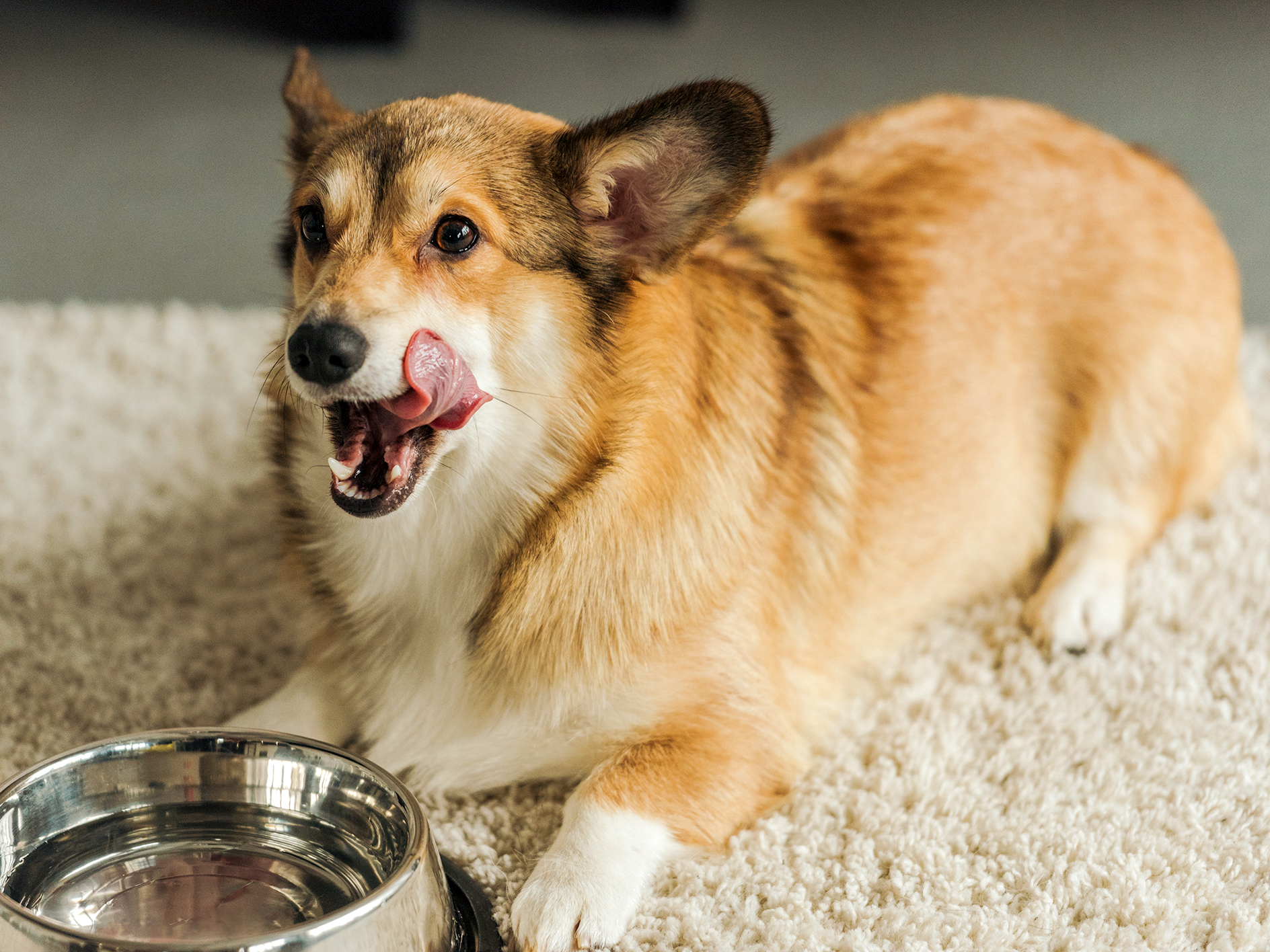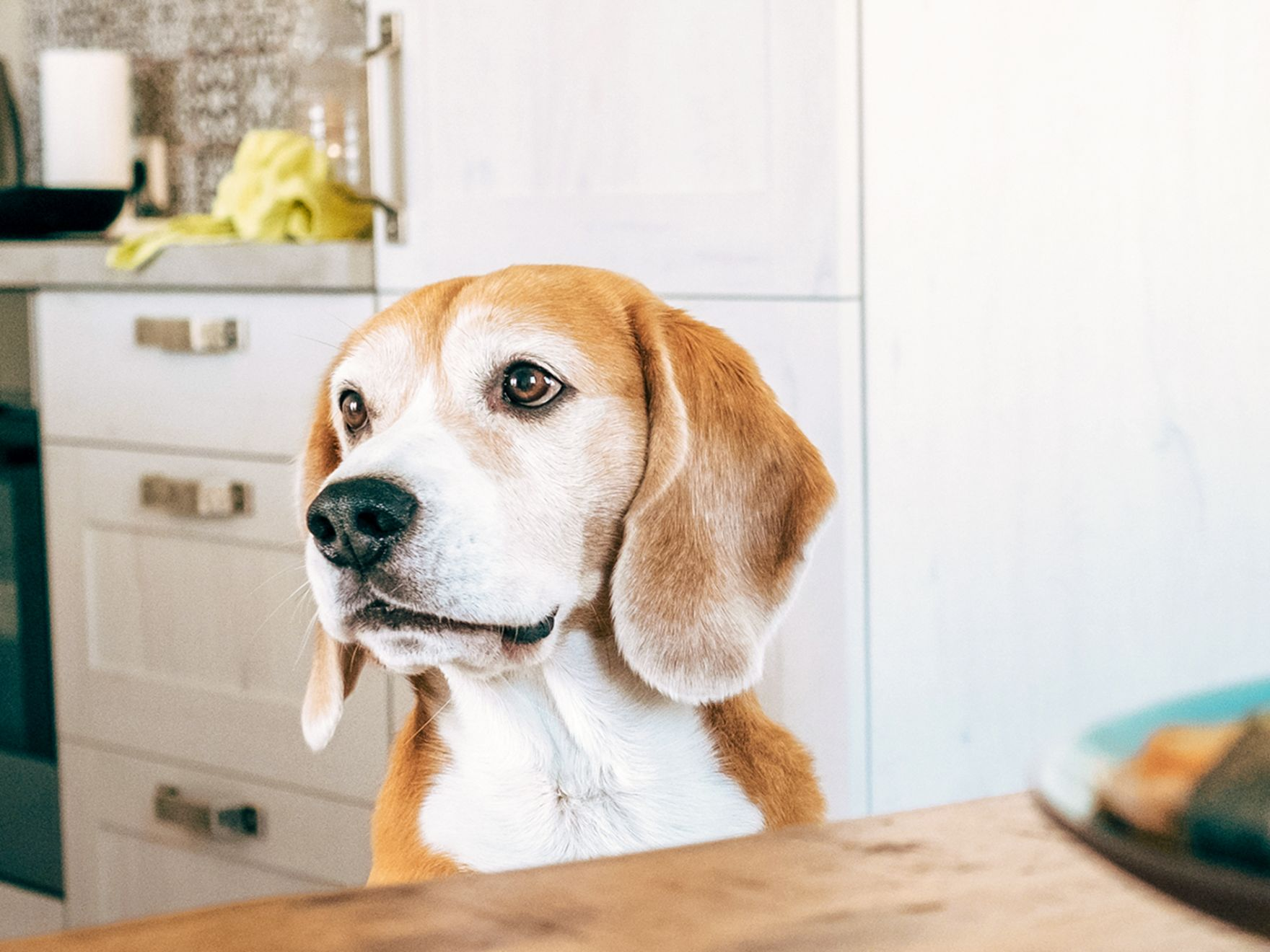Healthy portions are smaller than you think
Many owners don't know how much food their dog really needs. This means that many dogs are overfed which can cause weight gain and lead to other health issues.


What is the correct portion size for my dog?
A healthy weight is maintained by achieving the right balance between energy intake and energy output. So the correct portion size for your dog can be different from any other dog, even if it is the same breed.
The starting point is to follow the feeding guide given by the food you have selected with your veterinarian which is most relevant to your dog. However, a number of factors may also need to be taken into consideration when determining the portion size, recommended feeding quantities for cats are often just guidelines.
First, consider the size of your dog. A small breed such as a Chihuahua will require a very different amount of calories from a St.Bernard. Try to choose a product which is designed for your breed or size of dog.
Next, think about their activity levels; are they a working dog or do they spend most time indoors with short walks during the day? If you have any concerns about what quantities to feed your dog, please contact your local veterinarian for specific advice.
The importance of healthy portioning
Your dog's portion size plays a big part in maintaining a healthy lifestyle. No matter how much they exercise, if a dog's portion is too large, they will still be prone to putting on weight.
Keep in mind, recommended feeding quantities for dogs are often just guidelines. The amount of food your dog requires may change throughout their life. For example, if your dog gains weight, you may wish to alter their daily calorie intake or diet to counter this. As your dog grows older and becomes less active, then their food portions may shrink with their reduced energy requirements.
It's important to consult your veterinarian if you are ever unsure about your dog's portion size.


Why is my dog begging?
If your dog seems to be asking you for food all the time, it doesn’t necessarily mean that they are hungry. This apparent taste for tidbits may actually be a habit, a sign of boredom or attention seeking. Giving in to begging can reinforce this behavior.
That being said, if your dog continues to show food seeking behavior, this could also be a sign of illness. Parasites such as worms, for example, can cause symptoms of increased appetite, constant hunger, sometimes combined with weight loss.
If signs of begging or consistent hunger persist, it's important to consult your veterinarian to rule out any underlying issues.
Tips to maintain portion sizes for your dog
Maintaining healthy portion sizes for your dog may feel tricky; however, there are a number of things you can consider to make sure you're not overfeeding your dog. Once you've identified your dog's correct portion size, use weighing scales for each meal to maintain accurate quantities every time. It's easy to underestimate how much you're actually feeding your dog.
Don't add human food to your dog's ration as this may upset the nutritional balance and calorie intake they require.
If you're giving your dog treats, take note of the calories and subtract these from their daily portion to make sure they aren't overeating. Treats should take up no more than 10% of a dog's daily rations. Alternatively, taking kibbles from your dog's rations to use as treats means you can be confident that your dog is getting the right balance of nutrients as well as maintaining the correct amount of calories.

Health depends on activity
Activity is key to keeping your dog stimulated and at a healthy weight. The amount of exercise varies based on their age, weight and breed.
Healthy growth lasts a lifetime
Losing weight is more difficult than preventing weight gain in the first place, so it's important that healthy habits and behaviours are set from day one.